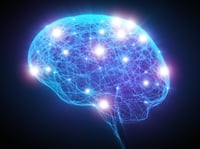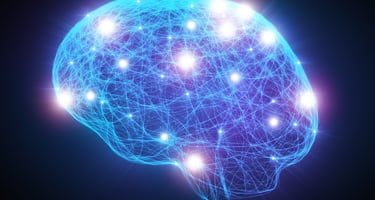Five-Day TMS Treatment Rapidly Reduces Depression Symptoms

A condensed five-day transcranial magnetic stimulation (TMS) protocol appears to reduce symptoms of treatment-resistant depression safely and effectively, according to a report published today in AJP in Advance. Compared with patients receiving a sham stimulation, those who received Stanford neuromodulation therapy (SNT) showed significantly greater improvements in depressive symptoms within one day of finishing the five-day treatment; these effects were sustained for four weeks. Current TMS protocols typically require six weeks of treatment.
“Open-label trials of our SNT protocol have shown a remission rate of ~90%, even in treatment-resistant individuals, which is almost double the remission rate of ECT [electroconvulsive therapy] for treatment-resistant depression (~48%), the current gold-standard treatment,” wrote Eleanor J. Cole, Ph.D., of Stanford University and colleagues. “However, the efficacy of SNT has not been investigated in a randomized sham-controlled trial.”
Cole and colleagues recruited adults aged 22 to 80 who had treatment-resistant depression and were experiencing a moderate to severe depressive episode (scores ≥20 on both the Hamilton Depression Rating Scale [HAM-D] and the Montgomery-Åsberg Depression Rating Scale [MADRS]) for the trial. (Patients who had any previous exposure to TMS were excluded from the trial.) A total of 29 participants were randomly assigned to either an active or sham SNT protocol, which involved 10 stimulation sessions per day for five consecutive days. Stimulation sessions took place hourly, beginning with 10 minutes of magnetic stimulation (or noise mimicking stimulation for the sham stimulation group) followed by a 50-minute rest. Prior to starting treatment, all participants received MRI scans to identify the optimal target location for stimulation.
The researchers evaluated the participants’ symptom changes using the HAM-D and MADRS before and after the five-day stimulation period, as well as one, two, three, and four weeks later.
After five days of treatment, MADRS scores dropped from baseline by 62.0% among participants in the SNT group compared with 14.3% in the sham stimulation group. The effects were sustained at four weeks, with scores reduced 52.5% in the SNT group compared with 11.1% in the sham group. Additionally, 11 of the 14 participants in the SNT group achieved remission (MADRS score of 10 or less) in at least one assessment during the four-week follow-up, compared with 2 of the 15 participants in the sham group, the authors noted. Similar results showing that SNT was superior to sham stimulation were seen when looking at HAM-D scores.
No severe side effects were observed during the trial, and headaches appeared to be the only side effect that was more prevalent in the SNT group than the sham stimulation group.
“The short duration and high antidepressant efficacy of SNT presents an opportunity to treat patients in the emergency or inpatient settings, where a compressed time course is necessary,” Cole and colleagues concluded.
To read more on the Stanford neuromodulation protocol, see the Psychiatric News article “New TMS Protocol Turns Six Weeks of Treatment Into One.”
(Image: iStock/Henrik5000)
Don't miss out! To learn about newly posted articles in Psychiatric News, please sign up here.






